The Ultimate Guide to Seeing the Northern Lights in Iceland
Periodo migliore
Luoghi migliori
Tour migliori
Probabilmente non c’è nulla di più magico dell’assistere al bellissimo fenomeno delle aurore boreali. È il sogno della vita di molti. Ma purtroppo queste imprevedibili luci danzanti non si manifestano a comando.
Qui troverai tutto ciò che c’è da sapere per realizzare il tuo sogno di vedere le aurore!
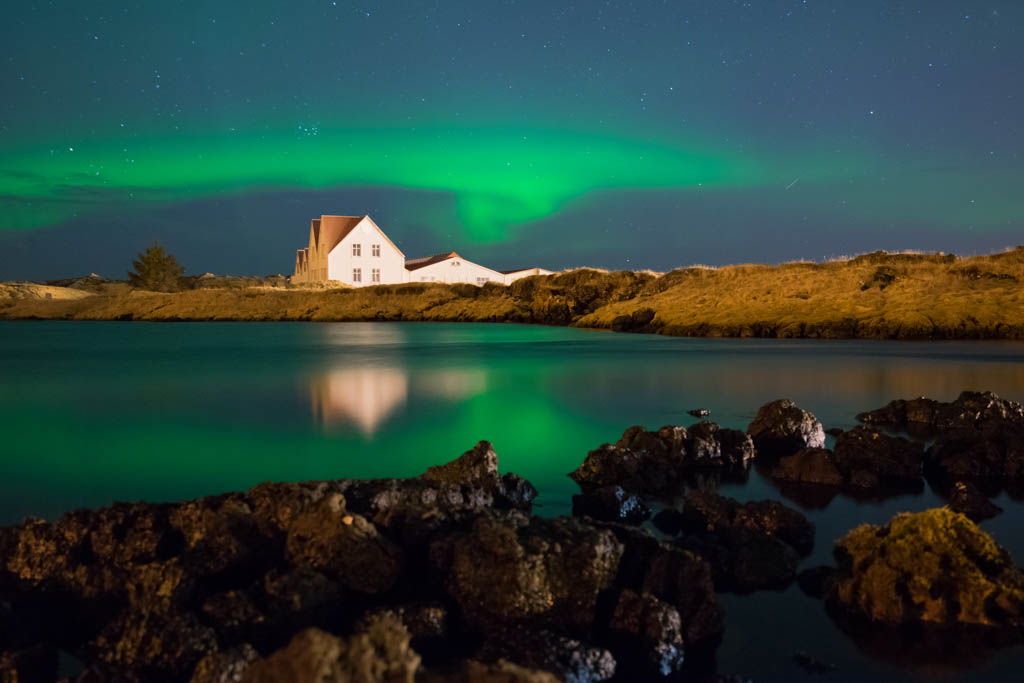
Aurora Boreale a Straumur, un’antica fattoria vicino Reykjavík
Qual è il periodo migliore per vedere le Aurore Boreali?
I migliori consigli per vedere le Aurore Boreali in Islanda
Quante chance ho di vedere le aurore - e come posso averne di più?
I migliori luoghi per vedere le Aurore Boreali in Islanda
Cosa portare con me nella mia avventura a caccia delle Aurore Boreali?
Per assistere all'aurora boreale in Islanda servono conoscenza, pazienza e un pizzico di fortuna. Per catturare uno spettacolo meraviglioso, avrai bisogno di alcuni fattori a tuo favore:
- oscurità,
- cielo sereno (o aperture nella copertura nuvolosa),
- buona attività solare (solitamente è così in Islanda),
- poco o nessun inquinamento luminoso.
Oscurità
To see the Northern Lights, darkness is required – making the hunt for the lights a night-time activity. From the end of August to mid-April, the skies are dark enough to witness auroral displays in Iceland.
Clear skies
The Northern Lights occur above our weather system; therefore, clouds can spoil the visibility. The Northern Lights forecast offers a regularly updated prediction for total cloud cover over the country. As weather and wind direction change fast in Iceland, conditions are almost unpredictable at times, and tour operators often decide in the late afternoon whether factors are favorable enough to head out for the night hunt. If you go on your own, check where chances for clear skies are
Attività solare
The strength of an auroral display depends on the solar activity, which is measured with the so-called KP index, ranging from 0 to 9. The higher the number on the scale, the higher the auroral activity and the better your chances of witnessing fast dancing lights in various colors. However, the Sun is constantly emitting solar particles, and even a low or moderate KP (2 or 3) is usually enough to experience good Northern Lights over Iceland.
Keep in mind that the index offers a forecast, but no guarantee that the Northern Lights will occur at any given time.
We have witnessed nights with a predicted KP7 and absolutely no lights, and even more often nights with a predicted KP 2 and lights dancing across the sky. If skies are clear, head out – no matter the KP.
You can monitor the KP index qui.
Light pollution
The further away you get from any source of light pollution, the better your chances of seeing the Aurora Borealis are. Leave the city behind and immerse yourself in the vast and rugged Icelandic nature – that’s where the real adventure starts!
Consiglio da professionista: Tieni presente che anche la Luna crea inquinamento luminoso. Se speri di vivere al meglio l'aurora boreale, ti consigliamo vivamente di scegliere un periodo con poca o nessuna luna.
Il colore aurorale più comune è il verde, ma i colori possono variare dal bianco, al verde, al rosa e al viola, a seconda degli elementi ionizzati.
L'aurora boreale appare nelle regioni polari, nel cosiddetto ovale aurorale.
Situata proprio al centro di questo ovale, l'Islanda è la destinazione perfetta per osservare l'aurora boreale.
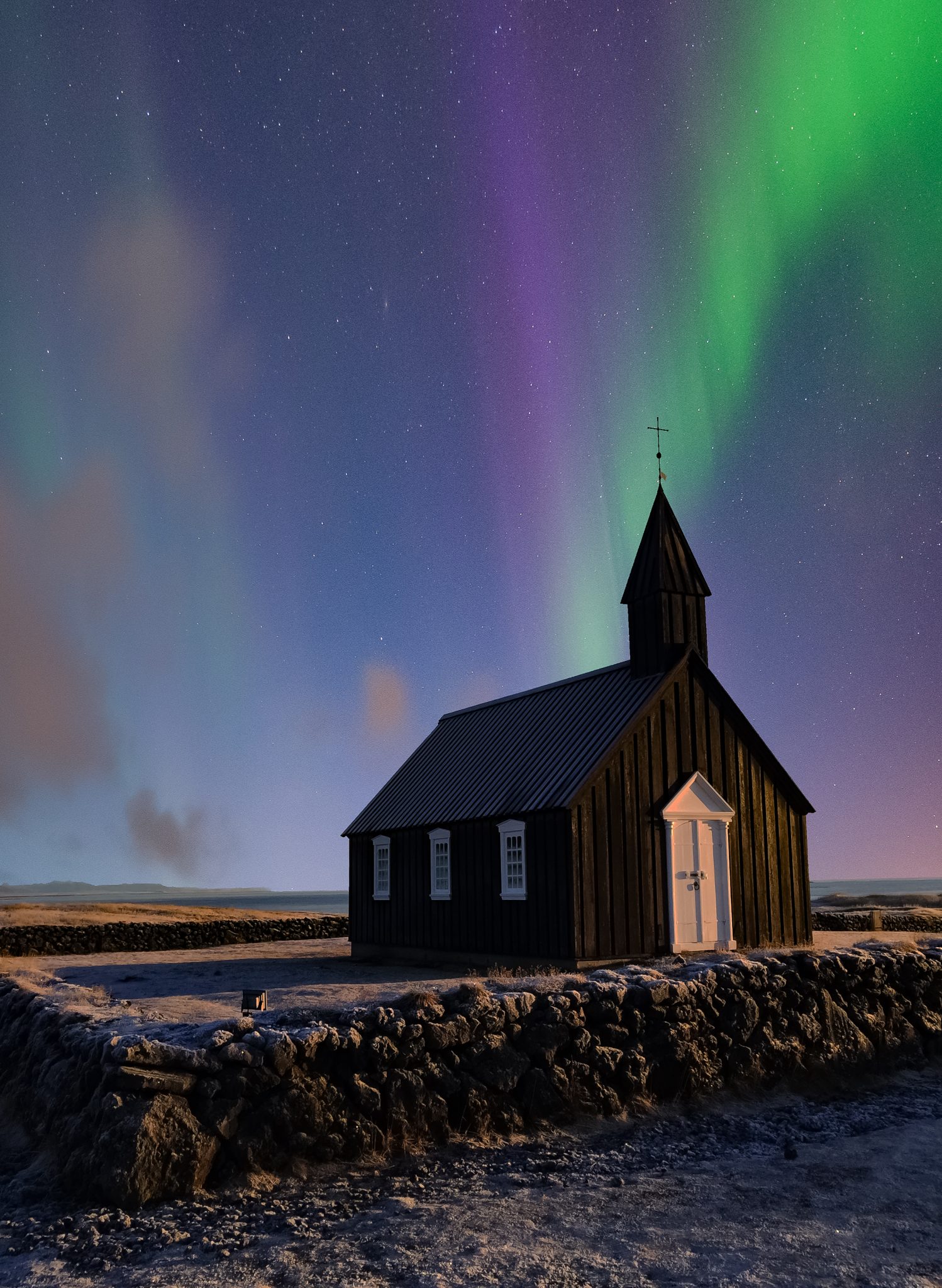
Aurora Boreale a Búðir
Qual è il periodo migliore per vedere le Aurore Boreali?
In Islanda, la stagione dell'aurora inizia a fine agosto e termina verso metà aprile. Qualsiasi momento durante questo periodo è favorevole e ha i suoi vantaggi.
Statisticamente, l'aurora è più spesso visibile intorno agli equinozi di settembre/ottobre e marzo/aprile.
Come fotografi dell'aurora boreale, personalmente amiamo settembre/ottobre – ecco perché.
Come vedere l'aurora boreale in Islanda
Ci sono diverse opzioni per vedere l'aurora boreale in Islanda:
- Dare la caccia alle luci a Reykjavik
- Partecipare a un tour guidato,
- Noleggiare un'auto e andare da soli,
- Partecipare a un tour in barca per l'aurora boreale.
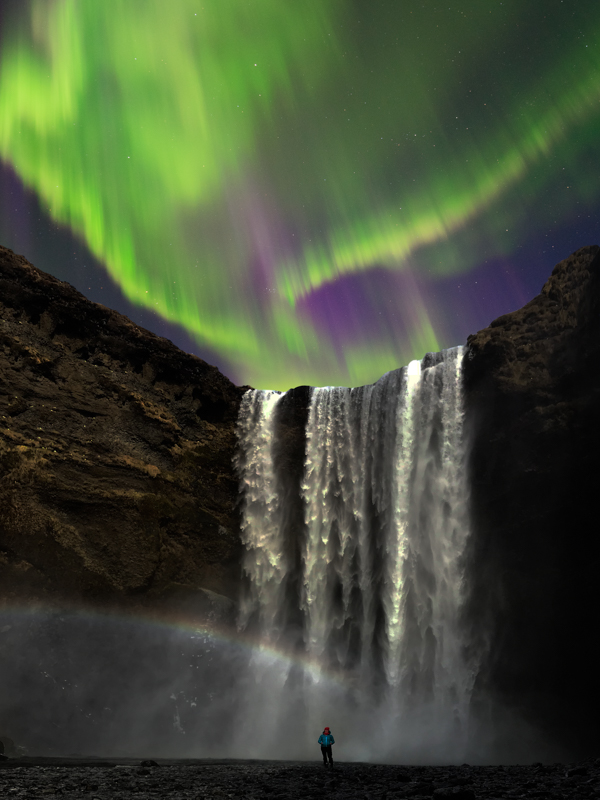
Aurora boreale a Skógafoss
Caccia all'aurora boreale a Reykjavik
"Si può vedere l'aurora dalla città?" è una domanda frequente dei cacciatori di aurora speranzosi. La risposta: sì, si può, se le condizioni sono favorevoli.
Tuttavia, l'esperienza non sarà così gratificante come potrebbe essere quando ci si lascia alle spalle le luci della città e ci si dirige verso la natura selvaggia artica. Spesso lo paragoniamo a guardare un film al cinema con tutte le luci accese. La polvere e l'illuminazione elettrica rendono difficile vedere le luci dell'aurora, quindi i tuoi occhi le elaboreranno piuttosto deboli e non così colorate.
Detto questo, se il budget è un problema, puoi sempre provare a vedere l'aurora dai dintorni della città.
Trova qui i luoghi migliori per vedere l'aurora boreale a Reykjavík.
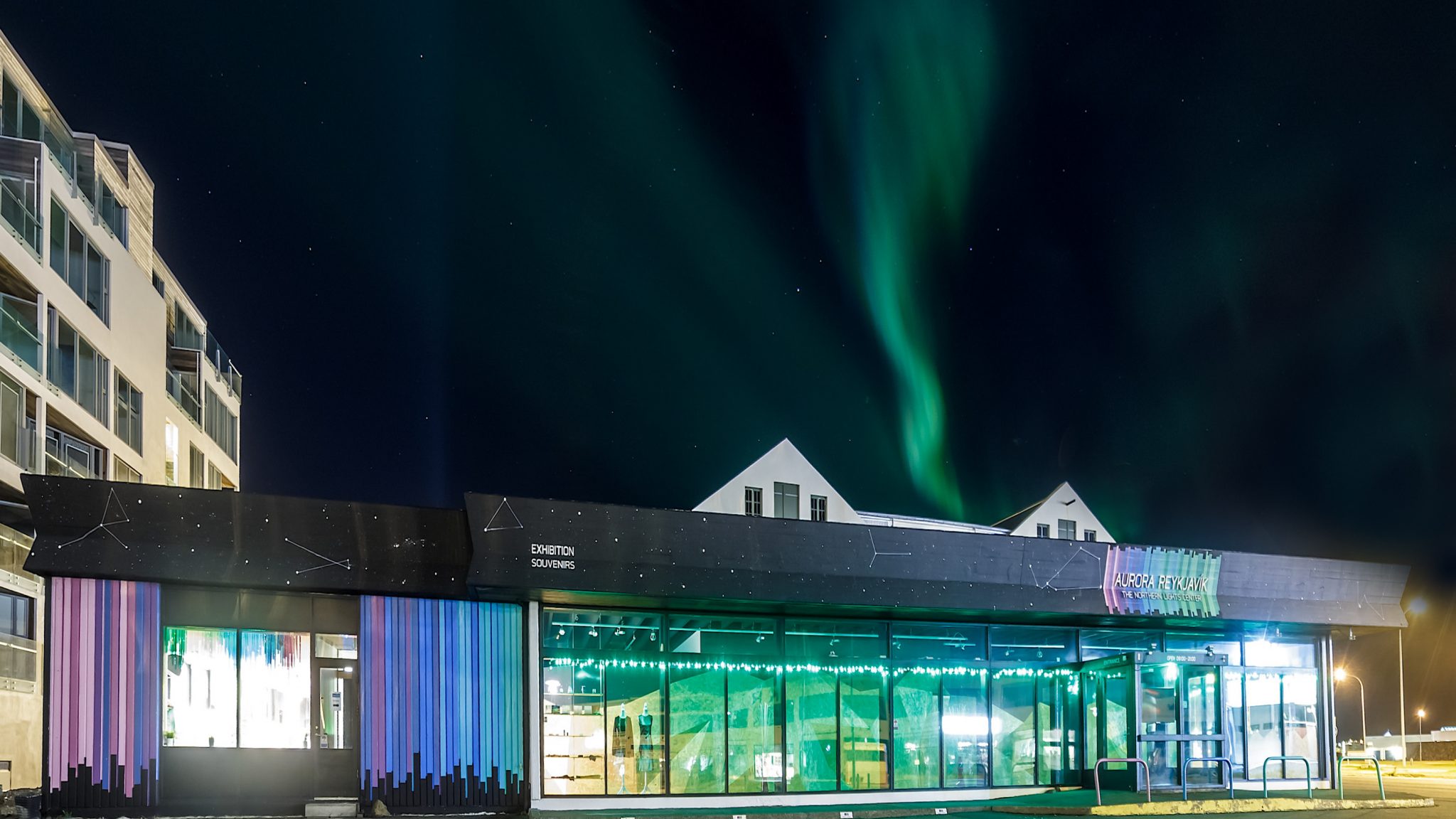
Aurora Boreale su Aurora Reykjavík
Partecipare a un tour guidato dell'aurora boreale
Il modo più comune per dare la caccia all'aurora boreale è unirsi a un tour guidato. Diversi operatori organizzano regolarmente escursioni da settembre ad aprile, offrendo un'ampia gamma di tour diversi per tutti i tipi di budget e preferenze personali:
- tour in super jeep,
- minibus and bus tours,
- tour privati,
- e una varietà di tour combo decisamente da considerare.
Per quanto imprevedibile possa essere l'aurora boreale, gli operatori dei tour fanno del loro meglio per catturare l'aurora boreale per te e renderla un'esperienza davvero unica. Se il tuo tour viene annullato a causa di condizioni meteorologiche sfavorevoli o non si vedono luci, avrai l'opportunità di riprogrammare o riprovare senza costi aggiuntivi.
Joining a guided tour is often a fitting choice for a number of reasons:
- Sarai sotto la guida di un esperto che sa dove trovare le luci e come fotografarle,
- Potrai raggiungere facilmente le zone dove le previsioni sono più promettenti,
- Viaggerai con persone che condividono il tuo interesse,
- Non dovrai preoccuparti di guidare nelle rigide condizioni invernali dell'Islanda.
Chi ha un budget limitato apprezzerà i tour in autobus ragionevolmente economici, che ti porteranno all'aurora senza spendere una fortuna.
I tour in minibus offrono un'esperienza in piccoli gruppi e spesso includono extra come bevande calde a bordo o foto di te sotto l'aurora boreale scattate dalla tua guida esperta. Queste escursioni vengono effettuate su veicoli più piccoli rispetto ai normali tour in autobus, consentendo una maggiore flessibilità nella ricerca del posto giusto per vedere l'aurora.
Se vuoi rendere la tua caccia all'aurora boreale un'esperienza davvero irripetibile, ti consigliamo vivamente di scegliere un tour in super jeep. Queste escursioni offrono sicuramente l'esperienza più personale e coinvolgente e le maggiori possibilità di assistere a uno spettacolo affascinante, spesso fuori dai sentieri battuti.
Puoi trovare i nostri tour preferiti qui.
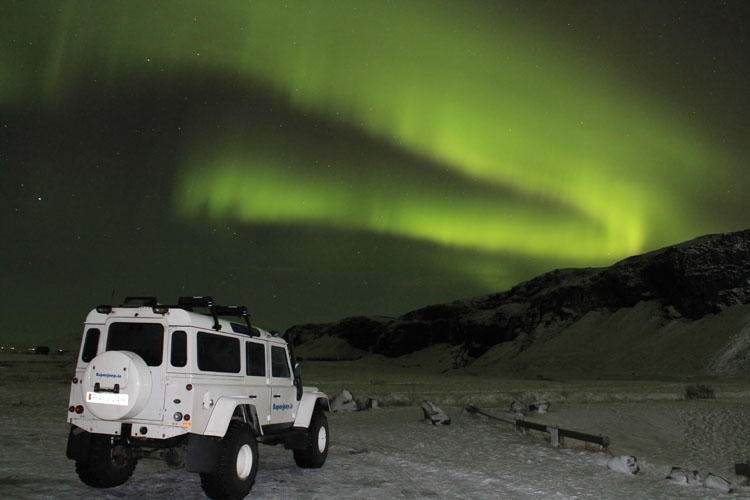
Foto dal nostro popolare tour dell'aurora boreale in Superjeep
Unirsi ad un tour per l'aurora boreale in barca
Un altro modo per vivere un'esperienza indimenticabile dell'aurora boreale è partecipare a una crociera serale sull'aurora boreale. I tour per l'aurora in barca sono progettati per il comfort, con aree interne riscaldate dotate di bar e servizi igienici e tute calde a disposizione per osservare l'aurora boreale sui ponti.
Tieni presente che le barche non consentono lo stesso grado di mobilità offerto dai tour in autobus o in jeep e, a causa del movimento della barca, fotografare l'aurora boreale con impostazioni di esposizione lunghe potrebbe risultare complicato.
Il punto di forza di un tour in barca per l'aurora boreale non è tanto la "caccia" alle luci in sé, quanto l'esperienza in mare aperto, i paesaggi incantevoli e le viste mozzafiato sulla costa di Reykjavík o Akureyri sotto l'aurora.
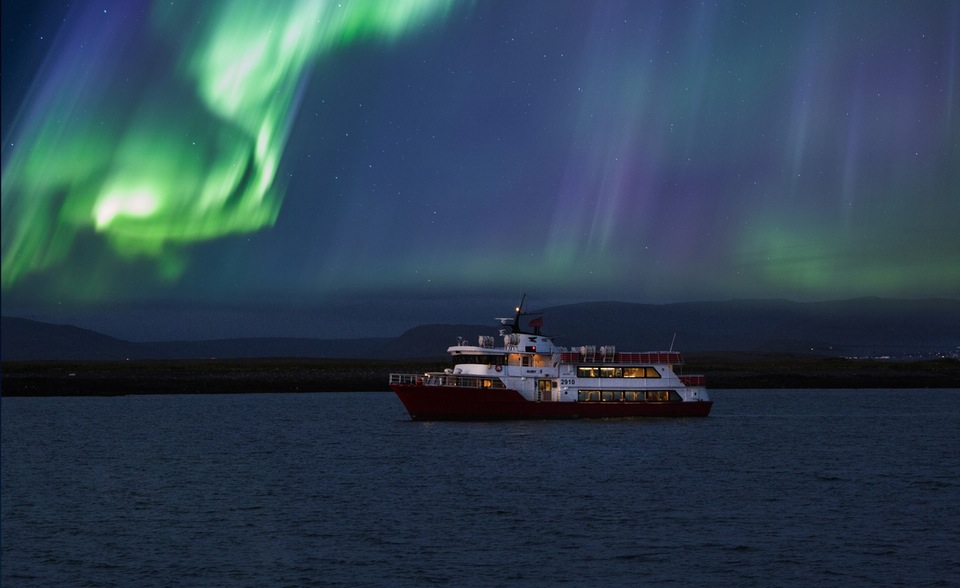
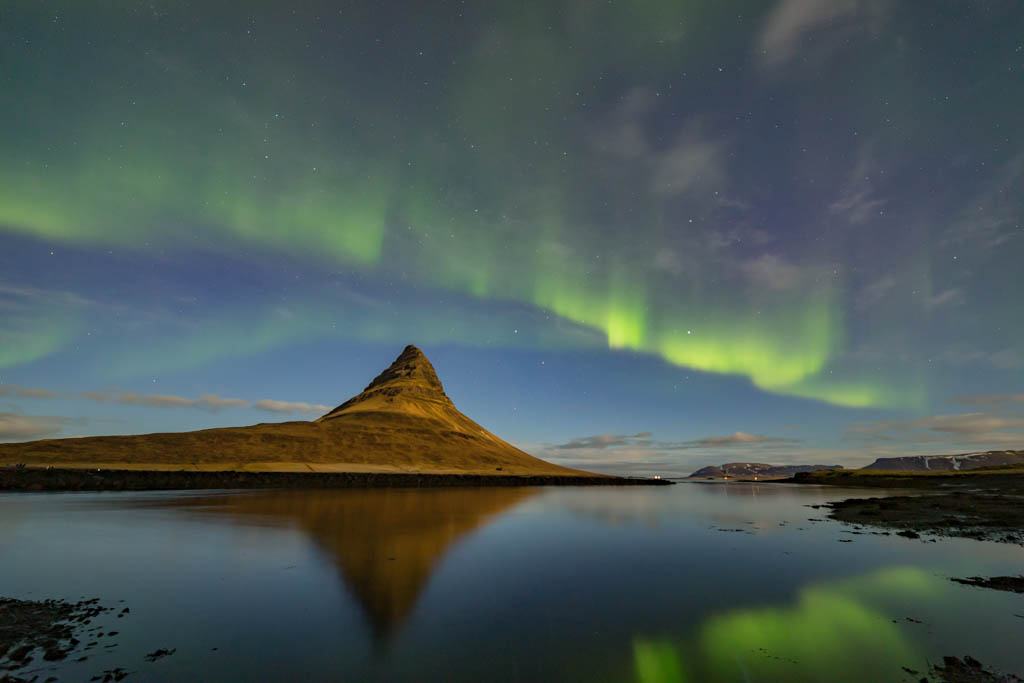
Aurora boreale a Kirkjufell
Quante chance ho di vedere le aurore - e come posso averne di più?
Il Sole emette costantemente plasma e le probabilità di vedere l'aurora boreale sono generalmente piuttosto buone, tenendo presente alcuni punti:
1. Considera un tour guidato con una guida esperta
La caccia all'aurora boreale può essere complicata e ti consigliamo vivamente di affidarti alla conoscenza e all'esperienza di una guida turistica locale. Spesso le persone non riescono a vedere le luci per ragioni molto semplici: ad esempio perché si trovano sul lato sbagliato di una catena montuosa, mentre le luci danzano allegramente nascoste dietro le cime.
2. Pianifica bene la durata del tuo soggiorno in Islanda
The Northern Lights tend to be very active for 2-3 nights, then quiet for 4-5 nights, in ongoing cycles. The longer
3. Prenota il tuo tour per la prima notte del tuo soggiorno
Nel caso in cui il tuo tour venga cancellato la prima notte a causa di condizioni meteorologiche sfavorevoli o per mancanza di luci, avrai comunque tempo per riprogrammare o usufruire del tuo nuovo tentativo gratuito. E, anche se sei fortunato e vedi le luci durante il tuo primo tour, potresti riprovare da solo le sere successive!
4. La pazienza è fondamentale
The Northern Lights tend to occur around magnetic midnight, which converts to
I migliori luoghi per vedere le Aurore Boreali in Islanda
Chances to see the Northern Lights are about the same all over Iceland, due to its ideal location under the auroral oval.
It is all a matter of clear and dark skies, so any place away from light pollution and clouds is potentially fine at these latitudes.
Tuttavia, ecco i nostri consigli personali:
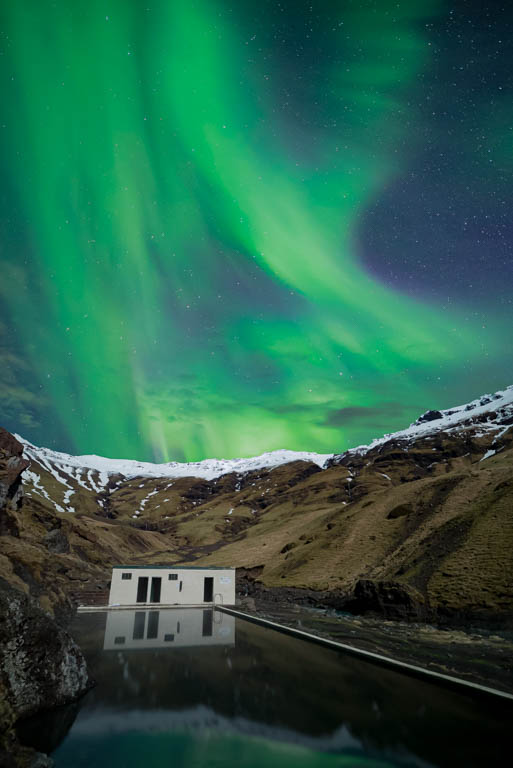
Aurora Boreale a Seljavallalaug
- Essere vicino a un lago non ghiacciato, come Þingvellir, dà l'opportunità di assistere a riflessi sorprendenti,
- La Laguna Blu non è solo il luogo perfetto per fare una nuotata rilassante, ma anche per osservare delle bellissime aurore,
- Le innumerevoli cascate sulla costa meridionale dell'Islanda, come Skógafoss, costituiscono un perfetto primo piano scenico per splendidi scatti dell'aurora boreale.
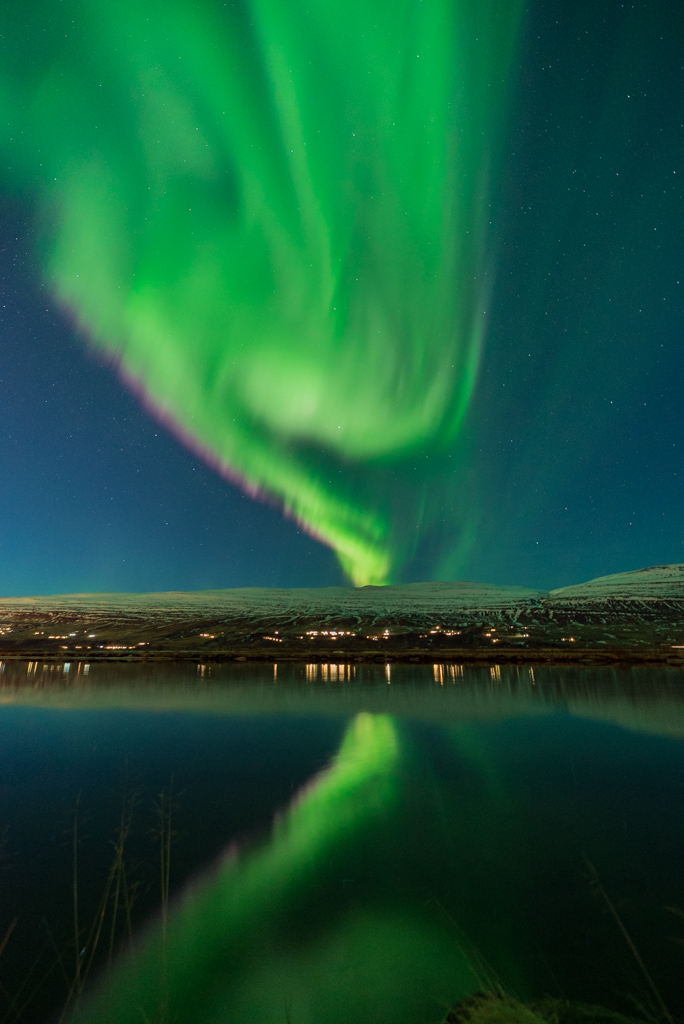
Aurora Boreale ad Akureyri
Cosa portare per un'avventura verso l'aurora boreale
Ecco alcuni elementi essenziali per rendere la tua caccia all'aurora boreale un'esperienza fantastica:
- Vestiti caldi, antivento e impermeabili: vestirsi preferibilmente a strati,
- Scarpe calde e resistenti,
- Thermos con bevande calde,
- Snack,
- Scaldamani e scaldapiedi
- Lampada frontale, possibilmente con luce rossa.
Per fotografare, avrai bisogno di:
- Macchina fotografica o smartphone con modalità manuale,
- Treppiede,
- Batterie di riserva
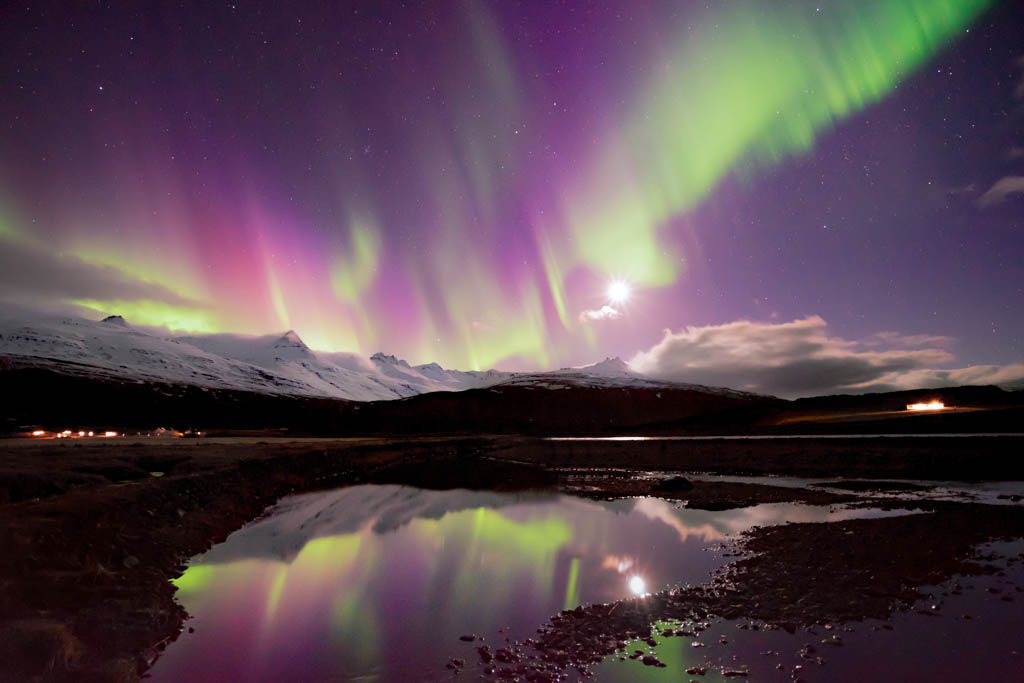
Laghi e stagni creano bellissimi riflessi
La caccia all'aurora boreale è sempre un'avventura e assistere allo spettacolo di questo magico fenomeno rimarrà nella tua memoria per tutta la vita.
Raccontaci le tue esperienze nei commenti!
